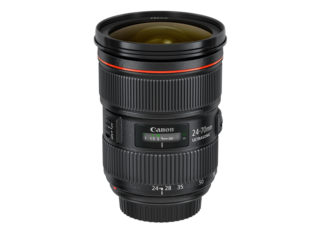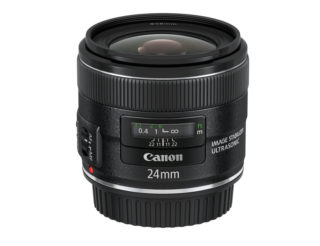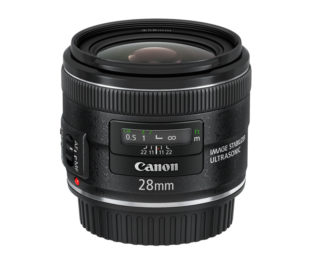Canon Announces 3 new Lenses…
Canon has announced 3 new lenses; a revised EF 24-70mm f/2.8L USM II, along with two primes an EF 24mm f/2.8 IS USM, and an EF 28mm f/2.8 IS USM. And while their press release promises impressive new heights in optical performance, I personally can’t find myself getting past the price tags.
While it’s been clear for the past couple of years, the prices of camera gear coming out of Japan has been going up—in part due to a stronger Yen and a weaker dollar—the prices have been increasingly heading towards the point where I have to question whether the gear is worth that kind of money any more.
Canon EF 24-70mm f/2.8L USM II
The 24-70mm focal range has long been the workhorse for photographers. In fact, even though it’s not my favorite lens, it’s almost certainly my most used lens. And it’s hard to argue that while it works, and does a good enough job, the current Canon EF 24-70mm f/2.8L USM was somewhat lagging behind Nikon’s in terms of optical quality. So the announcement of the EF 24-70mm f/2.8L USM II isn’t entirely unexpected.
While the old 24-70 f/2.8 has an impressive number of exotic (1 UD and 2 aspherical) elements, the new 24-70 f/2.8L USM II ups the exotic glass game by doubling the number of UD elements and adding a super UD element while keeping the 2 aspherical elements. The changes in exotic glasses promise to reduce aberrations including color fringing.
Moreover, the 24-70mm f/2.8L USM II manages to shed a few ounces, dropping the weight from 33.3oz (950g) to 28.4oz (805g).
Unfortunately this drop in weight comes with the loss of the reverse-extension zoom barrel. If you’re not familiar with this, the way the existing 24-70 works was that it was shortest at 70mm and longest at 24mm; with the hood attaching to the outer fixed barrel instead of the inner moving one. Though it resulted in a huge shade, it meant that the lens was always properly shaded regardless of what focal length you were shooting at.
The new 24-70 II behaves like any other extending zoom does, where it lengthens as focal length increases, and the lens hood is mounted to the front of the moving lens barrel. As a result, the lens hood, really only shades optimally at 24mm, and not at 70mm.
The real jaw dropping feature of the new EF 24-70mm f/2.8L USM II, however, is the price. And by jaw dropping, I’m talking an estimated street price of $2300 US. This is a full $600 more than Nikon is asking for their 24-70 f/2.8 and a staggering $900 more than the current Canon 24-70mm f/2.8L USM, and almost as much as their 70-200mm f/2.8L IS II USM. To put this another way, if you’re looking to get yourself a photojournalist style kit of f/2.8 glass from 16mm to 200mm you’re now looking at over $6000 in lenses alone.
One other thing the worth a least a mention, the new 24-70 f/2.8L USM II sees some filter bloat, replacing the standard 77mm front filter from it’s pro predecessor with an 82mm front filter. So those of you, like me, who had standardized on 77mm filters and bought a 77mm circular polarizer hoping you wouldn’t need to buy another one. Ya, you’ll be breaking out your wallet for a nice new CPL too.
Canon EF 24mm f/2.8 IS USM and Canon EF 28mm f/2.8 IS USM
Though not to take away from their uniqueness, I’m combing my comments on these two lenses, as they’re really more similar than they are different. In fact, it raises a question in my mind as to why one of them exists.
Wide angle primes have long been the tools for landscape and street photographers, though typically for slightly different reasons. Being prime lenses, they tend to out perform their zoom counter parts when it comes to image quality. Fewer elements, mean better contrast, and one a single focal length means the lens can be better optimized to be sharp and distortion free. Moreover, they tend to pack considerable punch in a tiny package.
Which brings us to the pair of “slow” primes, the 24mm f/2.8 IS USM and the 28mm f/2.8 IS USM. Canon presently has two non-stabilized primes at the same focal lengths and apertures, though they are both some what dated and the old 28mm f/2.8 isn’t even a USM lens. However, they are cheap, coming in at $375 and $260 respectively. Though there not optical stars, they aren’t priced that way either. What they are, though, is entry level wide angle primes—with the 28mm f/2.8 being a entry level APS-C normal as well.
It’s not all bad however, the new primes feature:
- a 4 stop image stabilizer
- Ring USM auto focus motors with Full Time Manual Focus
- distance information for E-TTL2 flashes
- improved super spectra coatings
- 7-bladed circular apertures
- molded aspherical lenses
Canon also touts a distance scale, which while not completely useless, since it includes f/11 and f/22 DoF marks, is still a mere shadow of a proper manual focus distance scale.
That said, the EF 24mm f/2.8 IS USM and EF 28mm f/2.8 IS USM should offer an improvement in image quality over their somewhat dated predecessors.
So what confuses my about the new 24mm and 28mm f/2.8 primes?
To start with their price; which Canon is placing at an estimated $850 and $800 respectively. True, that’s a site cheaper than the EF 24mm f/1.4L USM’s $1750 price tag, but that still leaves the 28mm f/2.8 IS USM out there in why land?
On the other hand, consider a fast normal prime for a crop camera, something Canon still doesn’t have. 28mm on an APS-C sensor has a field of view equivalent to 45mm on a 135-format frame, which is arguably more normal than 50mm. However, at f/2.8 and at nearly the same price as the EF-S 17-55 f/2.8 IS USM, you have to ask yourself what is that lens really buying you? It’s certainly not buying action freezing shutter speeds, even if the IS system is 2 stops better than the EF-S 17-55 f/2.8.
It would seem to me that a full frame 24mm f/2.8 IS USM priced at around $800-850 isn’t completely unreasonable, when the alternative is the 24mm f/1.4L USM at $1750. However, I think a fast crop normal, say a EF-S 28mm f/1.8 USM, at a $500 or so price point would have made more sense than the $800 full frame 28mm f/2.8 IS USM.
While I’m sure all 3 lenses will be stellar performers that at least begin to warrant their prices, it’s really starting to look like Canon photographers need to start fearing for their wallets.


